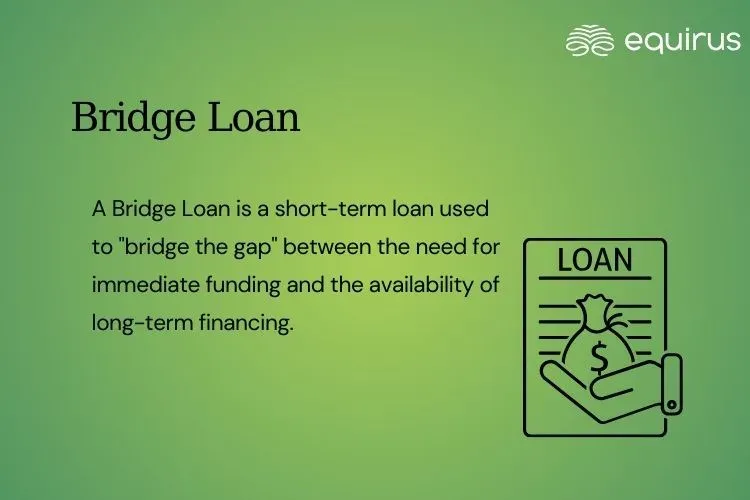Bridge Loan

Key Highlights
-
A Bridge Loan is a short-term loan used to "bridge the gap" between the need for immediate funding and the availability of long-term financing.
-
Key characteristics includes short tenure, higher interest rates, quick disbursal and collateral-based.
What is a Bridge Loan?
A Bridge Loan is a short-term loan used to "bridge the gap" between the need for immediate funding and the availability of long-term financing. It provides quick cash flow while a person or business is waiting for more permanent funding or the sale of an existing asset.
Key Characteristics
1. Short Tenure: Typically ranges from a few weeks to 12 months.
2. Higher Interest Rates: Interest is usually higher than regular loans due to the short-term risk.
3. Quick Disbursal: Ideal for urgent needs, such as buying property, funding acquisitions, or managing cash flow gaps.
4. Collateral-Based: Often secured by an asset like real estate or inventory.
Where It’s Used?
1. Real Estate
-
A common use is when someone wants to buy a new house before selling their old one.
-
The bridge loan gives them cash to make the new purchase, which is repaid after the old house is sold.
2. Corporate Finance
- Businesses use bridge loans to meet working capital needs, pay off urgent dues, or complete mergers/acquisitions while waiting for long-term funding.
Example
-
A company is acquiring another firm but hasn’t yet received approval for a large loan or raised capital.
-
To avoid missing the opportunity, it takes a bridge loan for ₹10 crore, which is repaid after the long-term funds arrive.
Bridge Loans in India
In India, bridge loans are offered by:
- Banks (subject to RBI guidelines)
- NBFCs (Non-Banking Financial Companies)
- Private lenders
They are often used in real estate, IPO financing, and corporate acquisitions.
Pros and Cons
| Pros | Cons |
|---|---|
| Fast approval and disbursal | Higher interest rates |
| Fills temporary cash gaps | Short repayment period |
| Helps in seizing time-sensitive opportunities | May require collateral or personal guarantees |
Bridge Loan vs Term Loan
| Feature | Bridge Loan | Term Loan |
|---|---|---|
| Duration | Short-term (weeks to 12 months) | Medium to long-term (1–15 years) |
| Interest Rate | Higher | Lower |
| Purpose | Interim financing | Long-term investments |
